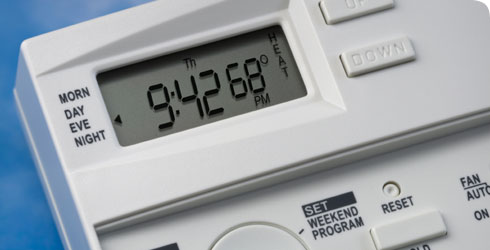Saving energy
In the UK, home energy contributes around 22% of the average carbon footprint, with over half of this coming from our heating systems. This means we can significantly cut our carbon footprint through a few simple home energy efficiency improvements.
The Energy Savings Trust has developed a tool to calculate how much CO2 and money you can save by applying some of these measures. Examples of 11 easy, effective, cost-saving actions are listed here, with figures based on a three-bedroom, semi-detached, gas-heated house.
Energy saving measures
| Energy saving measure | Potential saving (£ per year) | Reduction in CO2 emissions (kg) |
| Always turn off your lights when you leave a room | £10 | 24 |
| Fit energy saving light bulbs in your home | £40 | 135 |
| Turn appliances off and avoid standby | £30 | 126 |
| Wash your laundry at 30°C | £10 | 44 |
| Top up loft insulation to a depth of 270mm | £60 | 299 |
| Boil only the amount of water needed | £10 | 28 |
| Turn down your thermostat by 1°C | £50 | 284 |
| Buy Energy Saving Trust Recommended products | up to £90 | up to 338 |
| Fit a hot water tank jacket | £40 | 192 |
| Fit draught proofing | £30 | 152 |
| Install cavity wall insulation (mostly relevant to homes built between 1920 and 1980) | £150 | 799 |
Much more information and advice is available from the Energy Savings Trust.
Green energy
Switch to a renewable electricity supplier. You can get up to 100% of your electricity from renewable sources, making a significant reduction to you carbon emissions. For impartial information about suppliers, visit Green Electricity.
Energy efficiency at work
The Carbon Trust helps organisations of all sizes to cut their energy bills and carbon emissions with practical advice, publications, interest-free loans, and on-site surveys.
Energy efficiency at school
Carbon Detectives’ Kit is an online resource for schools in England to calculate their footprint and set targets for reduction, and includes practical advice and comparisons with other schools.
Further home energy inspiration
The Yellow House is a renovated 1930s ex-council house where energy consumption was reduced by more than 60%. The Yellow House website contains lots of clever ideas and information.
Toolbox

Our scientists study the snails that host the schistosomiasis parasite, which causes a disease that affects nearly 200 million people.

